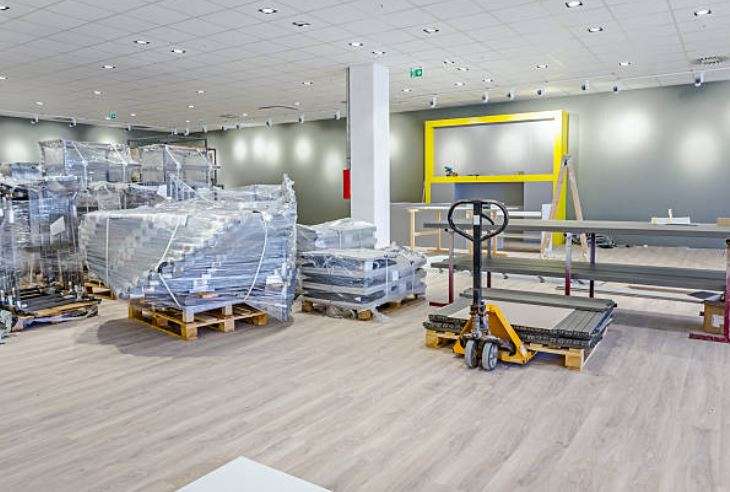Opening a new retail location in Canada is an exciting milestone—but it’s also one of the most complex undertakings in the retail industry. Unlike renovating or resetting an existing store, a new store setup requires meticulous planning, coordination across multiple teams, and an understanding of unique logistical challenges specific to the Canadian market.
At The Reset Team, we’ve supported hundreds of new store openings across Canada over our 15+ years of hands-on experience in retail merchandising. We’ve learned that success isn’t just about getting the doors open on time—it’s about creating a seamless, visually compelling shopping experience from day one. Here’s your roadmap to a flawless new store setup.
Why New Store Setups Require a Different Approach
Before diving into the critical path, it’s essential to understand why new store setups require a distinct approach compared to store resets or remodels.
Here’s what makes new store setups unique:
Starting from Zero: There’s no existing infrastructure to work around. Everything from fixture placement to receiving areas must be designed, delivered, and installed in the correct sequence.
Multiple Stakeholders: New store projects typically involve general contractors, design teams, construction crews, equipment suppliers, and merchandising teams—all working in a confined space with overlapping timelines.
Compressed Timelines: Lease agreements and grand opening dates create hard deadlines. There’s little room for error or delays.
First Impressions Matter: Your new store represents a fresh opportunity to make an impact in the market. The setup must be perfect because there’s no “existing baseline” to fall back on.
The Critical Path: Step-by-Step Guide to a Successful New Store Setup
Every successful new store setup follows a structured plan. This step-by-step guide outlines the key stages to ensure your project stays on schedule and delivers exceptional results.
1. Early Planning and Site Assessment (8-12 Weeks Before Opening)
The foundation of any successful new store setup begins long before the first fixture arrives.
Conduct a Comprehensive Site Assessment: Visit the location early to understand the space’s unique characteristics. Note ceiling heights, column placements, entry points, loading dock access, and any structural limitations that might affect fixture installation or merchandising layouts.
Review Architectural Plans: Collaborate with design teams and general contractors to ensure the merchandising and fixture installation plans align with the overall construction timeline. Identify potential conflicts early, such as when HVAC installation overlaps with fixture assembly areas.
Establish Clear Communication Protocols: Set up regular check-ins with all stakeholders. In our experience, daily communication during critical phases prevents costly misunderstandings and keeps everyone aligned.
Plan for Canadian-Specific Considerations: Factor in regional logistics, such as longer shipping times to remote locations, winter weather impacts on delivery schedules, and provincial regulatory requirements.
2. Fixture and Equipment Coordination (6-8 Weeks Before Opening)
Once you have a clear understanding of the space and timeline, it’s time to coordinate the physical elements.
Confirm Delivery Schedules: Work backward from your opening date to establish when fixtures, millwork, furnishings, and equipment must arrive. Build in buffer time for potential delays, especially if shipping from overseas or across provinces.
Sequence Your Installations: Not everything can go in at once. Typically, you’ll need to:
- Install millwork and built-in fixtures first
- Place free-standing fixtures and gondolas
- Set up cash wraps and sales desks
- Install signage and visual graphics
- Arrange product displays and merchandising
Coordinate Storage Solutions: New stores often receive merchandise before the sales floor is ready. Plan for adequate receiving and temporary storage areas and ensure you have a system for the disposal of packaging materials.
Verify Equipment Functionality: Cash registers, POS systems, and other equipment should be installed and tested well before opening day. There’s nothing worse than discovering a technical issue hours before your grand opening.
3. Integration with Construction Teams (4-6 Weeks Before Opening)
This is where new store setups get complex. Multiple trades are often working simultaneously, and coordination is critical.
Establish Site Protocols: Define work zones, safety procedures, and scheduling windows. Who works when? Where can materials be staged? How do teams access power and loading areas?
Build in Flexibility: Even with perfect planning, construction timelines shift. Your merchandising and fixture installation team must be agile enough to adapt to delays or changing priorities.
Maintain Daily Communication: Site supervisors should be in constant contact with general contractors and project managers. Issues caught early can often be resolved quickly; issues discovered late can derail entire timelines.
Plan for Final Touches: Coordinate the sequencing of flooring completion, lighting installation, and final cleaning with your merchandising setup. Your team often needs to come in immediately after construction wraps up.
4. Product Merchandising and Visual Presentation (2-3 Weeks Before Opening)
With fixtures in place, it’s time to bring your store to life.
Strategic Product Placement: This isn’t just about filling shelves—it’s about creating an intuitive shopping journey. Creating a planogram allows you to plan where to strategically place high-demand items, create clear sightlines, and design displays that encourage impulse purchases.
Install Signage and Graphics: POP displays position critical sales drivers that will provide maximum impact. Consider traffic flow, sightlines from the entrance, and proximity to complementary products.
Final Walk-Through: Before opening, conduct a thorough inspection. Check that all fixtures are secure, products are adequately stocked and faced, signage is accurate, and the overall presentation meets brand standards.
5. Pre-Opening Testing and Staff Readiness (1 Week Before Opening)
The final week is about refinement and ensuring operational readiness.
Test All Systems: Run transactions through POS systems, test lighting scenarios, verify that security systems are functional, and ensure all equipment is operating as expected.
Staff Training: While this may not be your merchandising team’s responsibility, coordinating with store management to ensure staff are familiar with the new layout can improve opening day success.
Soft Opening or Final Touches: Some retailers opt for a soft opening with a limited number of customers. The soft opening provides a low-pressure opportunity to identify and fix last-minute issues.
Final Adjustments: Based on testing and soft opening feedback, make any necessary tweaks to product placement, signage, or fixture arrangements.
Common Pitfalls to Avoid in New Store Setups
Even with careful planning, new store projects can encounter challenges. Here are the most common pitfalls we’ve observed:
Underestimating Timeline Buffers: Weather delays, shipping issues, and construction overruns happen. Build contingency time into your critical path.
Poor Communication Between Teams: When GCs, design teams, and merchandising crews aren’t aligned, work gets duplicated or delayed. Establish clear communication channels from the start.
Neglecting Site-Specific Challenges: Every location is unique. What worked in Toronto might not work in rural Alberta. Conduct thorough site assessments and adapt your approach accordingly.
Rushing the Final Details: Even minor issues—a crooked sign, poorly faced products, or a wobbly fixture—can undermine an otherwise successful setup. Allow time for quality control.
Inadequate Receiving and Disposal Planning: Without proper receiving areas and waste management plans, your brand-new sales floor can quickly become cluttered with boxes and packaging during setup.
Why Partner with Experienced New Store Setup Professionals
Opening a new store involves significant investment and risk. Partnering with experienced new store setup professionals like The Reset Team provides several critical advantages:
Proven Processes: Having executed thousands of retail merchandising projects across Canada, we’ve refined our approach based on real-world experience. We know what works—and what doesn’t.
Agile Problem Solving: When unexpected challenges arise (and they always do), experienced teams can adapt quickly without derailing the entire timeline.
Collaborative Approach: Our project managers work seamlessly with contractors, construction teams, and design professionals. We’re not just another vendor—we’re part of your integrated project team.
Nationwide Reach: Whether you’re opening in Vancouver, Toronto, Montreal, or smaller markets across Canada, we have the resources and experience to deliver consistent, high-quality results.
Safety and Professionalism: Our teams are fully trained and certified, prioritizing safety on every job site. We work discreetly to minimize disruption and maintain professional standards throughout the project.
Open with Confidence: Trust Canada’s Retail Merchandising Professionals
A successful new store setup in the Canadian market requires more than just assembling fixtures and stocking shelves. It demands careful planning, seamless coordination, and deep retail expertise.
By following this critical path—from site assessments through pre-opening testing—you’ll set your location up for long-term success. Partner with professionals who understand the Canadian retail landscape so you can focus on serving customers and growing your business.
Ready to open your next location? The Reset Team creates flawless store setups that drive sales from day one. Contact us and discover why we are Canada’s best retail merchandising service!





